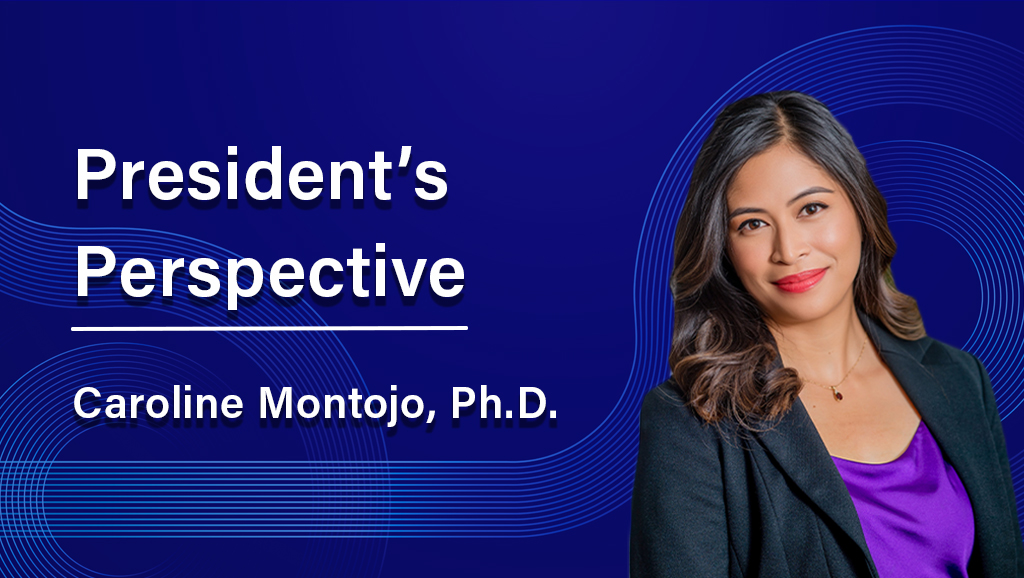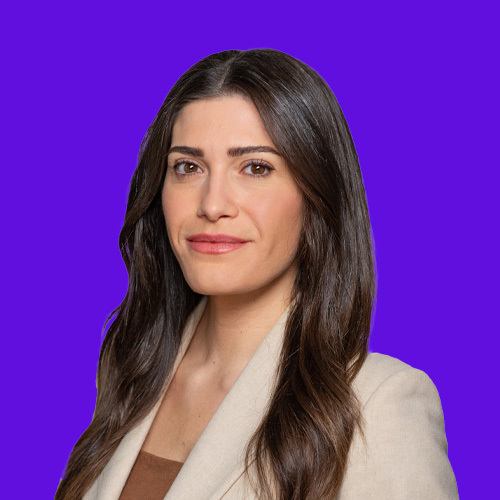News & Insights
UnRavelled Outreach: Neuroscience, Art, and the Poetry of Caregiving

The UnRavelled Outreach Program is a creative new initiative funded under the Dana Foundation’s Frontiers program that extends the impact of a new play, UnRavelled, beyond the stage. Written by actor, playwright, and Atlantic Fellow Jake Broder, the play tells the story of Canadian biologist Anne Adams, whose fascination with Maurice Ravel’s Boléro and sudden drive to create art emerges alongside her diagnosis of frontotemporal degeneration (FTD). One of her most striking works, Unravelling Boléro, created as her aphasia was setting in and her ability to use language was becoming impaired, captures the recursive design of the orchestral music in paint, a stroke of beautiful creativity that arose from a terrible disease.
Through workshops, exhibitions, and interactive experiences, the program is designed to raise awareness of FTD, support caregivers and patients, and foster meaningful dialogue between neuroscience and the communities it serves.
The Story That Sparked a Movement
Anne Adams’ transformation from a celebrated scientist into a prolific painter has long fascinated both artists and neuroscientists. Her striking visual rendering of Ravel’s 1928 work became the subject of a 2008 journal publication co-authored by Bruce Miller, M.D., and William Seeley, M.D., at the University of California, San Francisco—both now collaborators on the UnRavelled Outreach program. Their study revealed how Adams’ illness reshaped her brain, diminishing language and social capacities while enhancing activity in regions associated with visual creativity.
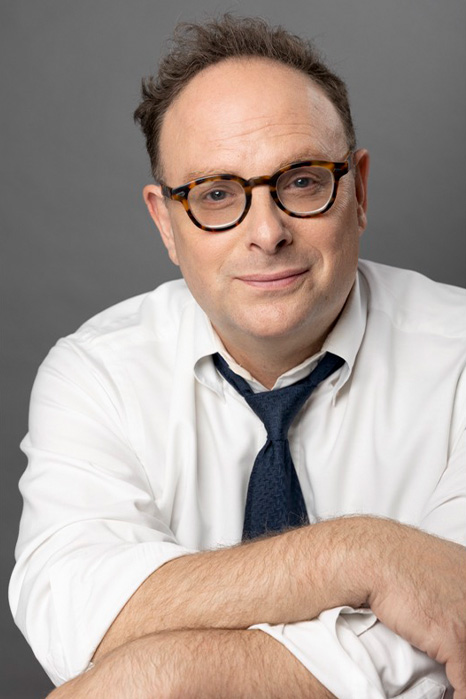

Playwright Jake Broder. Courtesy of Artist.
For Broder, the recursive, predictable composition of Ravel’s Boléro offers a profound depiction of how the brain engages with music. The music’s repeating patterns invoke the ways in which healthy brains process rhythm and variation but also reveal what can remain intact when disease sets in. Broder notes that while people with FTD may struggle to process many complex signals, the structured predictability of Ravel’s Boléro can still capture attention and provoke a strong neural and emotional response.
An insight of this kind, drawn from the lived experience of communities affected by this neurodegenerative disease, highlights what neuroscientists and clinicians can learn through multidirectional engagement and community partnership in science.
Building on Science and Collaboration
The UnRavelled Outreach Program offers a pilot opportunity for Dana Frontiers that tests how arts and aesthetic experiences can serve as powerful entry points for collaboration among scientific and FTD communities. These shared experiences highlight the potential of accessible, personally relevant forms of engagement to foster stronger connections. Designed to complement the play and create sustainable impact, the outreach activities can be experienced before or after a performance of the play, while many exhibitions and educational programs are also open to the public independently.
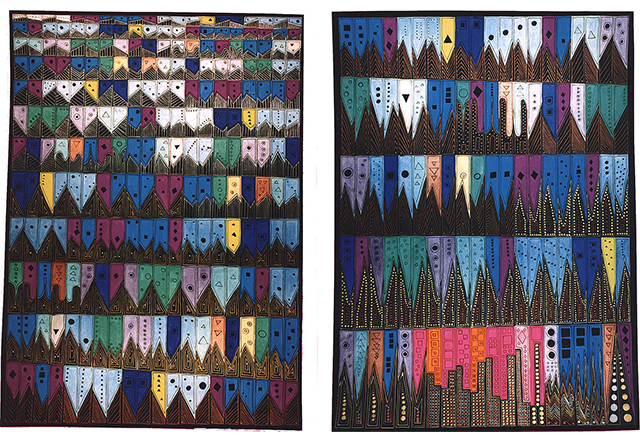

UnRavelling Bolero painting by Anne Adams, 1994.
Planning began with the UnRavelled Outreach Summit in late 2024, where caregivers, patient advocates, neuroscientists, pharmaceutical partners, and artists convened to co-develop the program’s approach. The program now encompasses a broad menu of activities. These include talkbacks and exhibitions to build public awareness, transmodal art workshops and resource “roadmaps” to support patients and caregivers, and educational initiatives such as a continuing medical education course for clinicians and visiting lectures for university students. While the latter elements are targeted toward professional audiences, the core of the program is designed to be public–facing, opening new spaces for community dialogue. This multidirectional, collaborative design reflects the goals of the Dana Frontiers program: to increase public engagement with neuroscience and strengthen trust between communities and researchers.
From Neurons to Redwoods: A Living Metaphor
One of the program’s most striking outreach activities is the Pop-Up Lobby, a space featuring art installations created for audiences to reflect and explore themes from the play. At its premiere at the Wallis Annenberg Center in Beverly Hills, the space includes four interactive stations where visitors can engage with FTD education, explore art exhibitions relevant to patient, community, and caregiving experiences, and learn about current research.
Station three, designed by an FTD care partner, is devoted to caregivers and transforms the lobby into a visual metaphor: a redwood forest. Visitors walk among towering images and displays that honor the caregiving networks at the root of the FTD community. Just as redwoods survive through interconnected root systems, caregivers provide essential, often unseen, support that sustains those living with dementia.
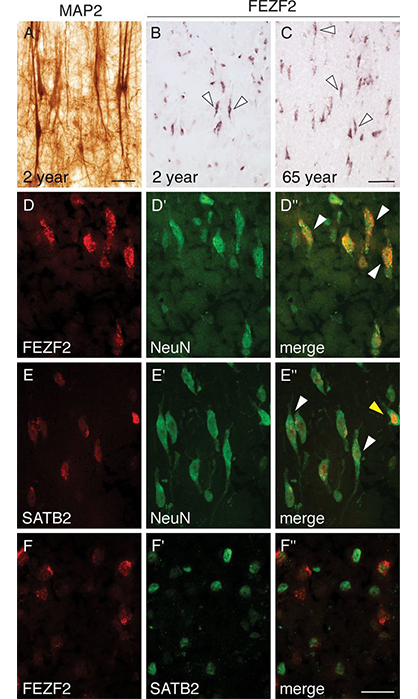

Images of von Economo neurons (VENs). Courtesy of Rapt Productions.
The metaphor resonates deeply with neuroscience as well, since the neurons most affected in FTD evoke comparisons to redwoods. Research by Seeley, Miller, and colleagues has shown that von Economo neurons (VENs)—rare, spindle-shaped cells found only in humans and great apes—are among the first to degenerate in the disease. Concentrated in regions critical for social and emotional awareness, VENs help integrate rapid decision-making with empathy and moral reasoning.
Their rarity, vulnerability, and interconnectedness have drawn comparisons to redwoods as well as to caregivers—both vital, sustaining forces within their ecosystems. VENs also resemble redwoods in form, with a large basal dendrite, akin to a trunk, and sparse, late branching akin to high canopy limbs. By evoking this imagery, UnRavelled Outreach translates complex neuroscience into something audiences can experience, illuminating how neurons and caregivers alike anchor and sustain the communities and structures around them.
“There’s poetry in it,” Broder said of the theme of the redwoods installation, which entwines art, science, and lived experience in a single powerful image.
Toward a Cultural Shift
The project aims to gather knowledge, inform, connect communities and caregivers to resources and support, and ultimately reshape how society views frontotemporal degeneration and dementia in general. By connecting scientific insight with creative expression, it demonstrates how complex ideas can become more accessible and meaningful to the public. As the program tours with the play, its activities will continue to evolve, opening new spaces for dialogue, building trust, and deepening public understanding of brain health.
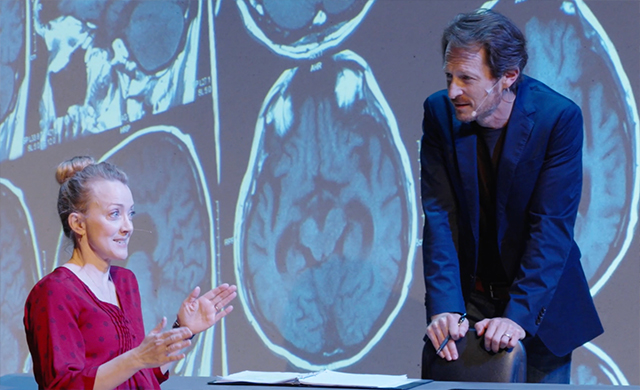

From left: Lucy Davenport as Dr. Anne Adams, Leo Marks as Maurice Ravel. Photo courtesy of Rapt Productions.
The play UnRavelled will premiere at the Wallis Annenberg Center in Los Angeles on October 17 and run for three nights, with additional stops on a national tour to follow. For those attending the play, each evening performance will be followed by a talkback session with scientists, caregivers, and advocates. At the same time, the UnRavelled Outreach exhibitions in the Wallis lobby are open to the public during opening hours. Other free outreach events include the Anne Adams Gallery/Brain Health Museum (October 12–20 on the Wallis campus) and Transmodal Art Workshops in local community spaces. Caregiving “roadmaps” co-created during the UnRavelled Outreach project will also be distributed during these activities and made available online. As the tour expands, the outreach program will travel alongside the play, adapting its activities to new audiences and communities.
Recommended Reading
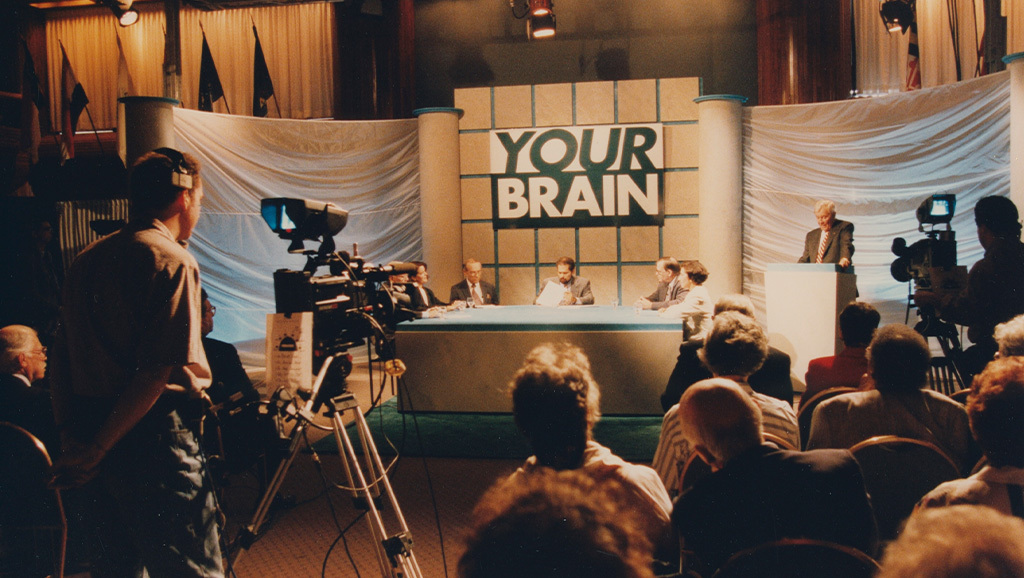
From Broadcast to Belonging: Dana's Public Engagement Evolution
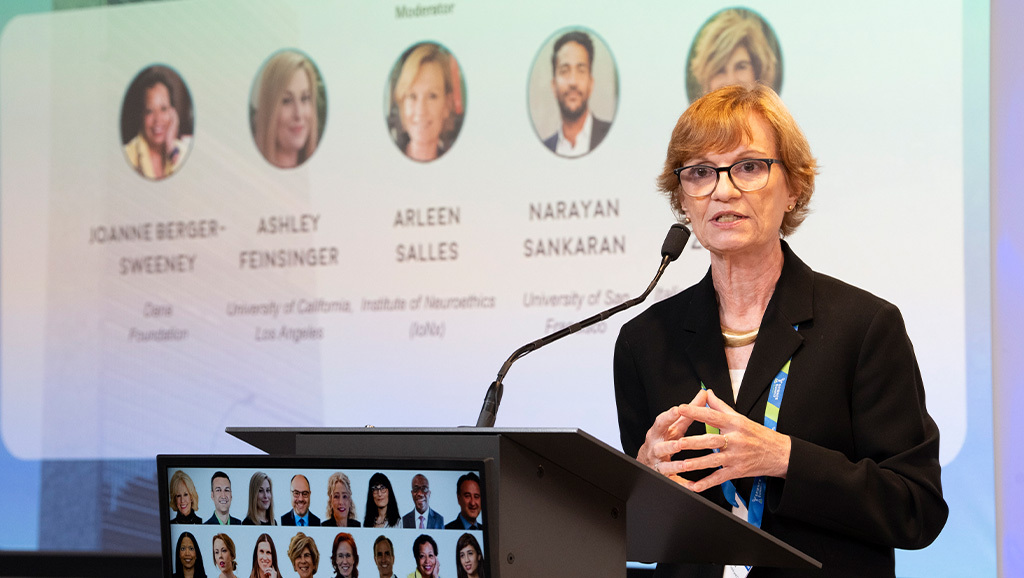
Reciprocity in Neuroscience: Dana Foundation Panel at the UN Science Summit
